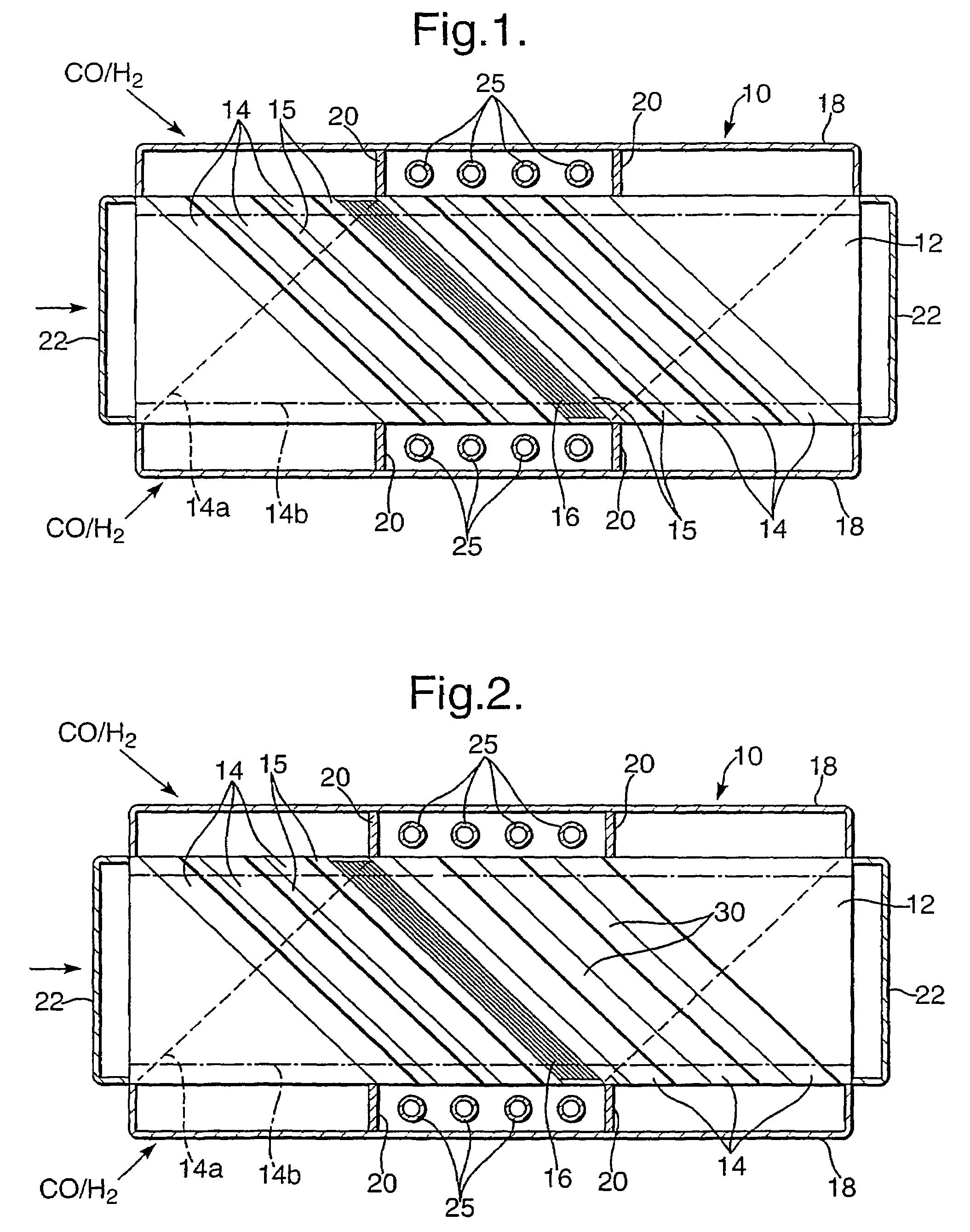Catalytic reactor and process
a catalyst and reactor technology, applied in the field of catalyst reactor and process, can solve problems such as decreased activity, and achieve the effect of enhancing heat transfer and catalyst surface area
- Summary
- Abstract
- Description
- Claims
- Application Information
AI Technical Summary
Benefits of technology
Problems solved by technology
Method used
Image
Examples
Embodiment Construction
[0012]The invention relates to Fischer-Tropsch synthesis, which may form part of a process for converting methane to longer chain hydrocarbons. Fischer-Tropsch synthesis is a reaction between carbon monoxide and hydrogen, and this gas mixture may for example be generated by steam / methane reforming. In Fischer-Tropsch synthesis the gases react to generate a longer chain hydrocarbon, that is to say:
nCO+2nH2→(CH2))n+nH2O
which is an exothermic reaction, occurring at an elevated temperature, typically between 190 and 350° C., for example 210° C., and an elevated pressure typically between 2 MPa and 4 MPa, for example 2.5 MPa, in the presence of a catalyst such as iron, cobalt or fused magnetite, with a promoter. The exact nature of the organic compounds formed by the reaction depends on the temperature, the pressure, and the catalyst, as well as the ratio of carbon monoxide to hydrogen.
[0013]A preferred catalyst comprises a coating of gamma-alumina of specific surface area 140–450 m2 / g w...
PUM
| Property | Measurement | Unit |
|---|---|---|
| pressure | aaaaa | aaaaa |
| temperature | aaaaa | aaaaa |
| pressure | aaaaa | aaaaa |
Abstract
Description
Claims
Application Information
 Login to View More
Login to View More - R&D
- Intellectual Property
- Life Sciences
- Materials
- Tech Scout
- Unparalleled Data Quality
- Higher Quality Content
- 60% Fewer Hallucinations
Browse by: Latest US Patents, China's latest patents, Technical Efficacy Thesaurus, Application Domain, Technology Topic, Popular Technical Reports.
© 2025 PatSnap. All rights reserved.Legal|Privacy policy|Modern Slavery Act Transparency Statement|Sitemap|About US| Contact US: help@patsnap.com

